Designed in 2006 by German architect Otto Steidle, under the coordination of Benedetto Camerana, for the Winter Games on the area previously occupied by the Mercati Generali until 2001, the former Olympic Village of Turin was originally conceived as a neighborhood to be integrated into the city fabric. Unfortunately, this is not what happened at that time and a portion of the complex became the site of the largest squatting occupation in Europe.
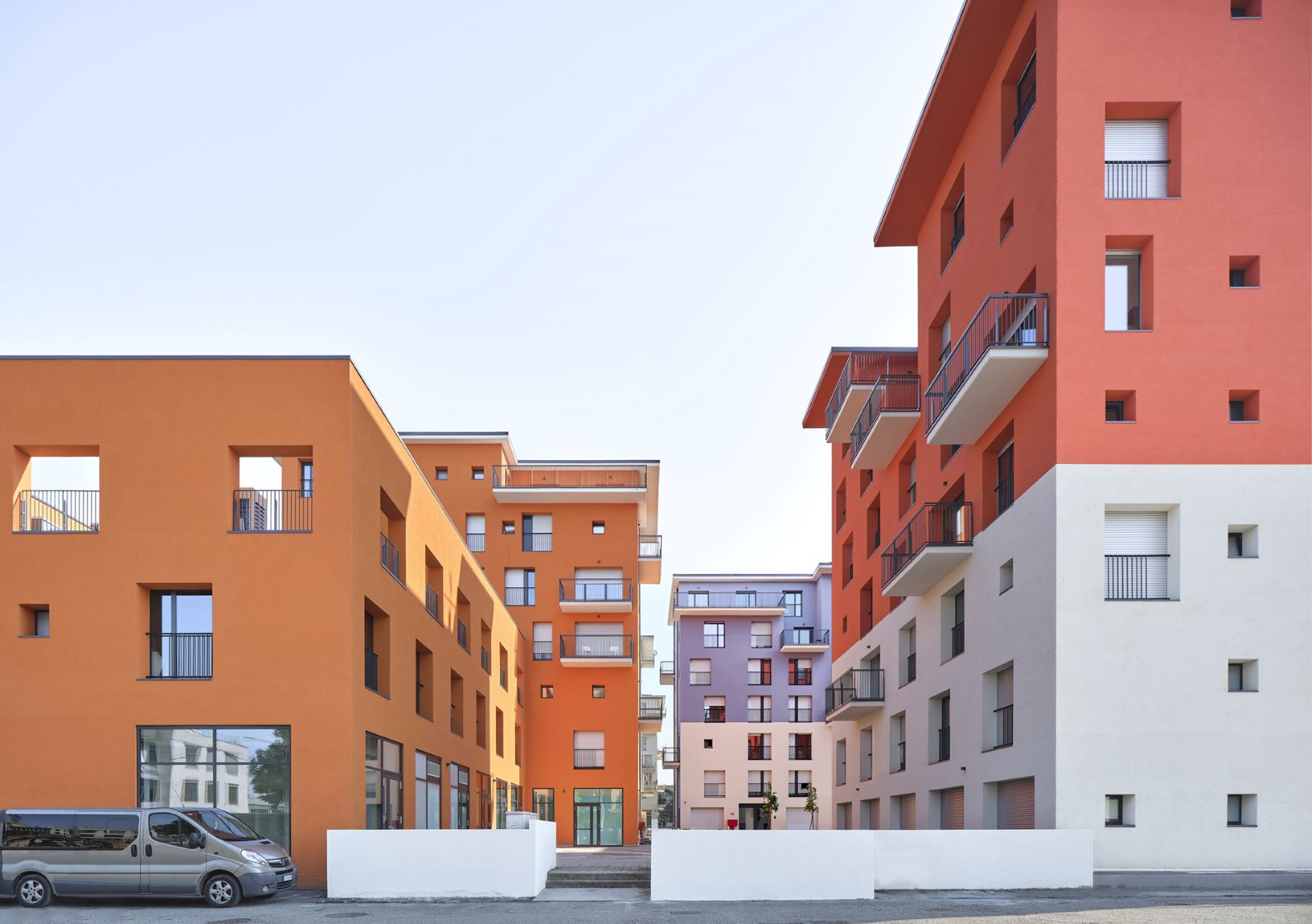
Starting from this social emergency, PICCO Architetti has recently transformed the former Olympic Village into a student and social housing, having an extraordinary opportunity for urban regeneration and providing approximately 400 bed spaces.
PICCO Architetti’s project aimed to create a new flexible residential model, building upon Steidle’s original concept. The settlement pattern proposed by the German architect introduced an open checkerboard arrangement as an alternative to the closed block layout typical of Turin’s urban tradition. Starting from the existing arches of the former Mercati Generali, designed by Umberto Cuzzi in 1932, the 39 buildings were arranged in a way that partially closed off the front towards the city while opening up towards the hill. The plan of the former Olympic Village, therefore, created an open space between the buildings, organized along longitudinal pedestrian axes that alternated green areas with transversal pedestrian pathways connecting the buildings.
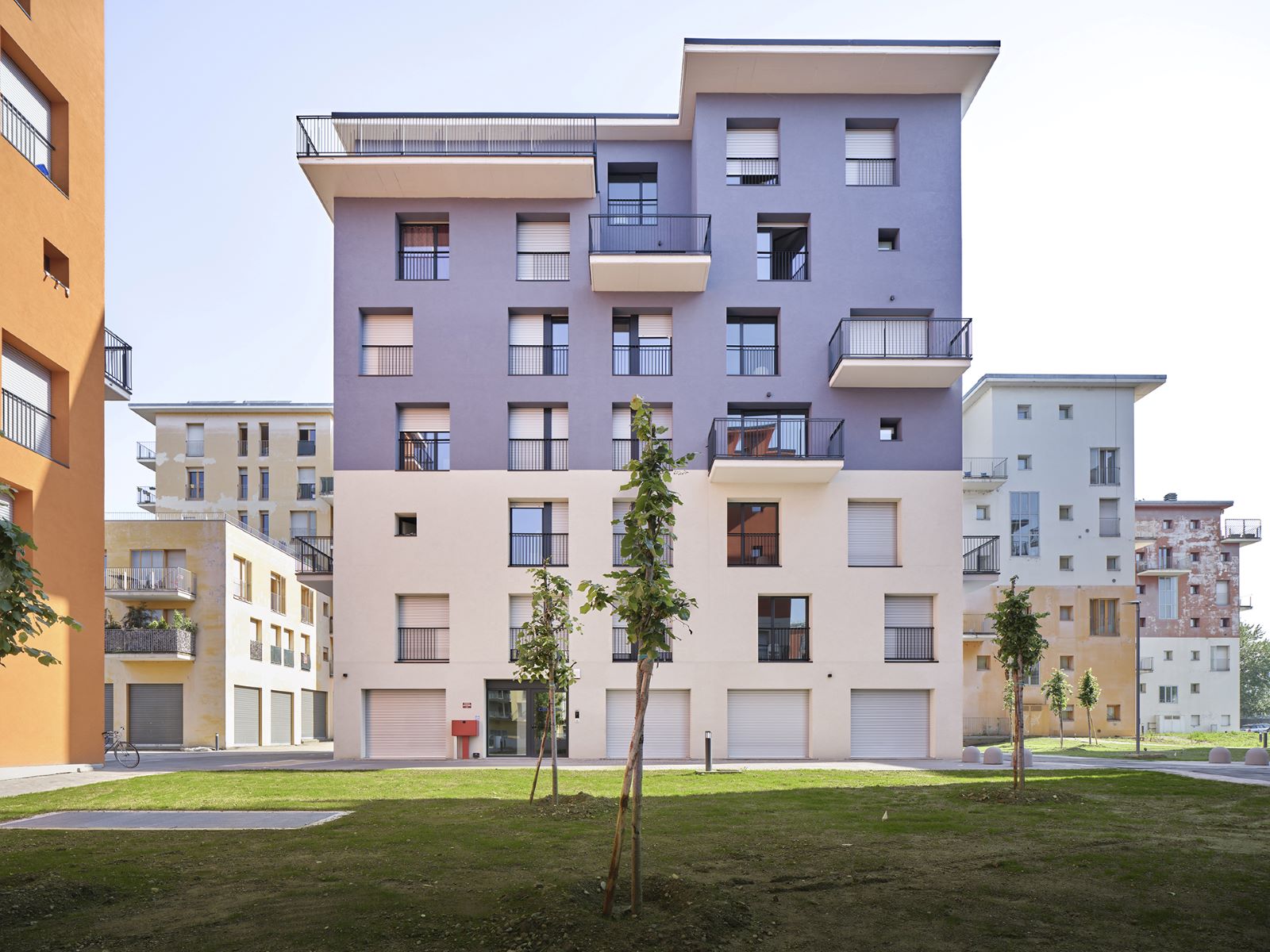
Six out of the seven buildings in the new student and social housing complex designed by PICCO Architetti were originally planned by Otto Steidle. Five of them (B2,D0, D2, F0, F2) had similar typological features with central layouts and a vertical distribution system organized by linearramps and circular development of the distribution landing. The sixth building (E4), the largest one located on the street front and serving as the main entrance to the entire complex, was structured with two staircases—one serving the 2-story section above ground and the other serving the 7-story section above ground, also connected to the basement level. The seventh building (E1), on the other hand, was designed by Austrian architect Adolf Krischanitz and featured a central staircase with parallel ramps.
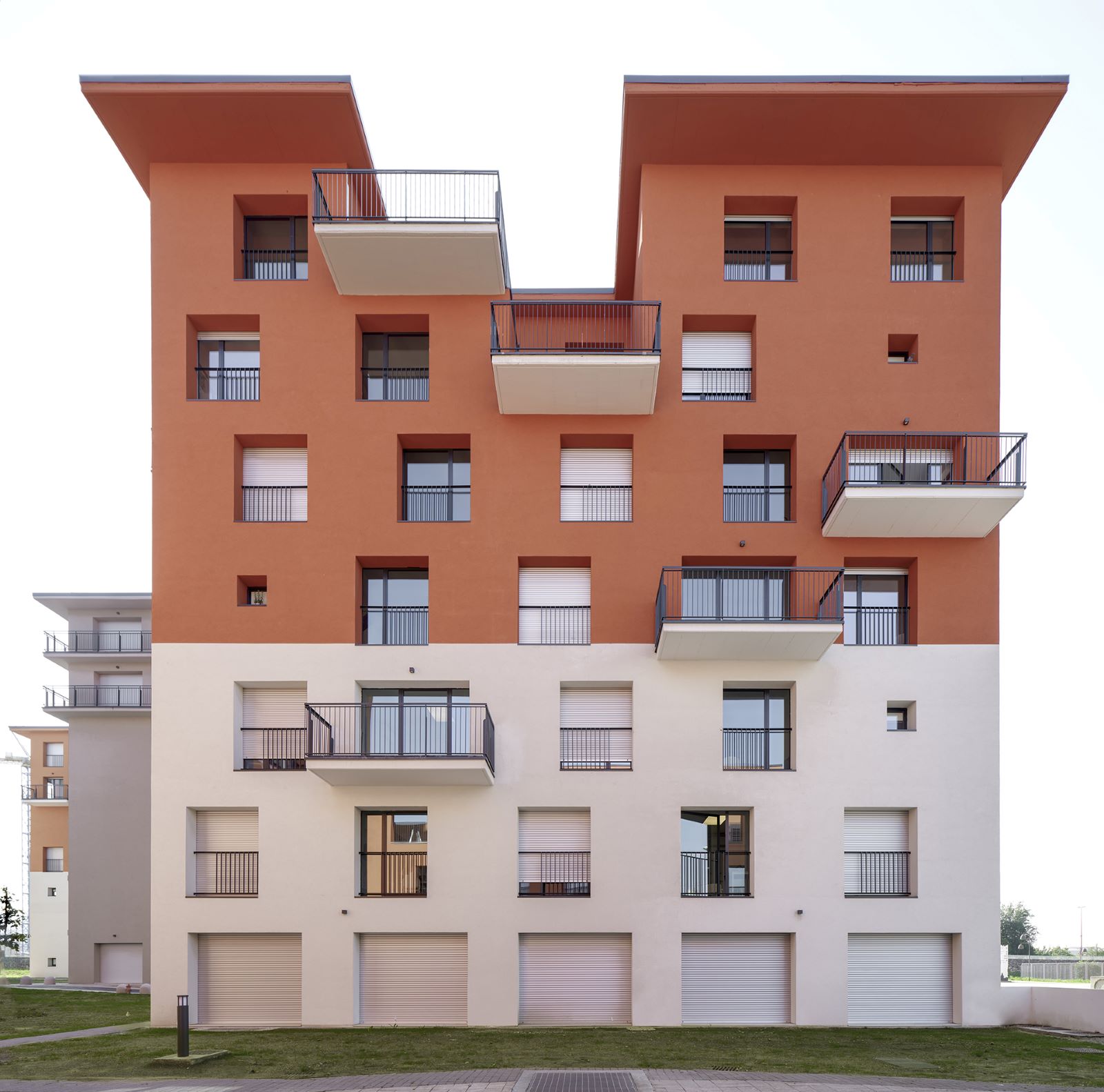
The first six buildings were organized with housing units ranging from studios to 4-bed spaces on all floors. The seventh building was divided into 27 studios and 14 two-bedroom apartments.
The restoration work was organized in two phases, preceded by an initial clearance of objects and furnishings left inside the premises. In the first phase, the buildings underwent a strip-out process, including the demolition of all interior partitions and the removal of all mechanical and electrical systems. In the second phase, all construction and installation works were carried out, and the buildings were handed over, fully complete.
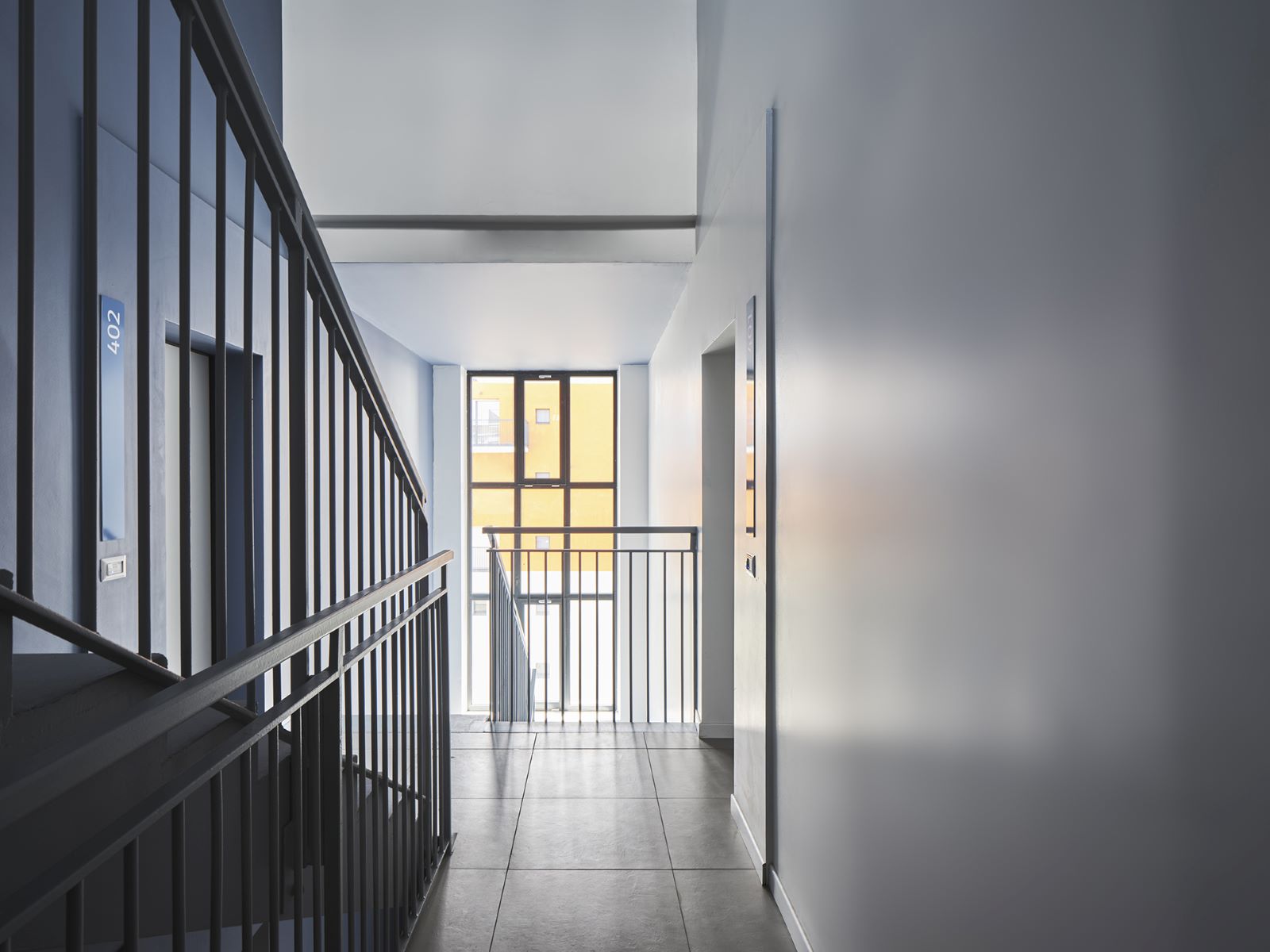
The outcome is a complex that retains its formal identity while undergoing significant renewal in terms of content—a flexible residence with units of various sizes, featuring a reception area and control point on the ground floor of the building facing Via Giordano Bruno. Here, offices, a gym, living areas, and a catering facility were located.
The project also included the improvement of the open areas surrounding the buildings and the refurbishment of common pathways and green spaces, with new tree and shrub plantings.
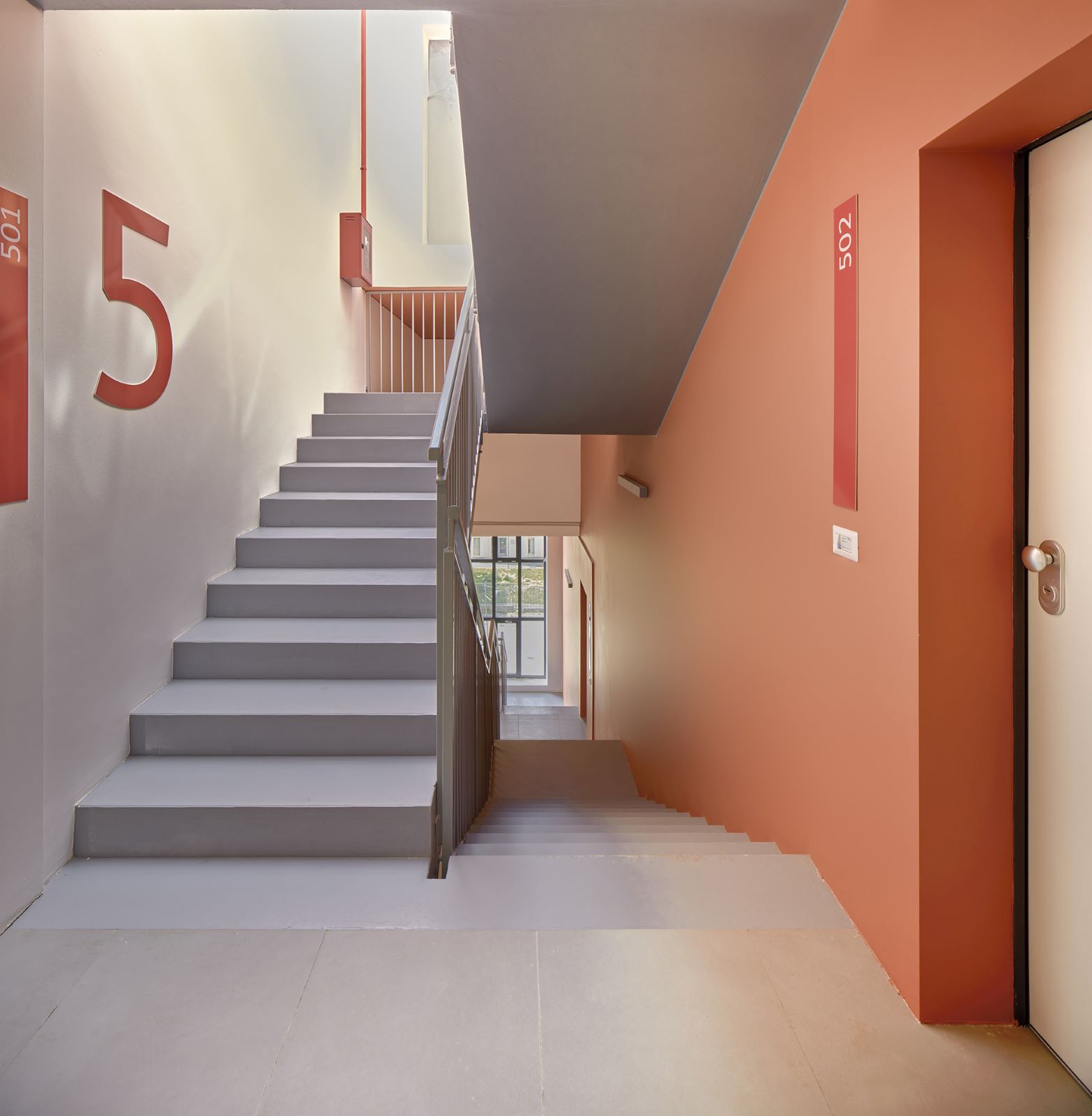
In addition, PICCO Architetti was keen on restoring the original colors of the complex, as conceived in the original project by German artist Erich Wiesner. The buildings were originally designed with different color schemes, following a color plan that gave the small neighborhood a strong visual identity and set it apart from the surrounding urban fabric.
The campus is managed by Camplus, an Italian co-living and student housing provider.
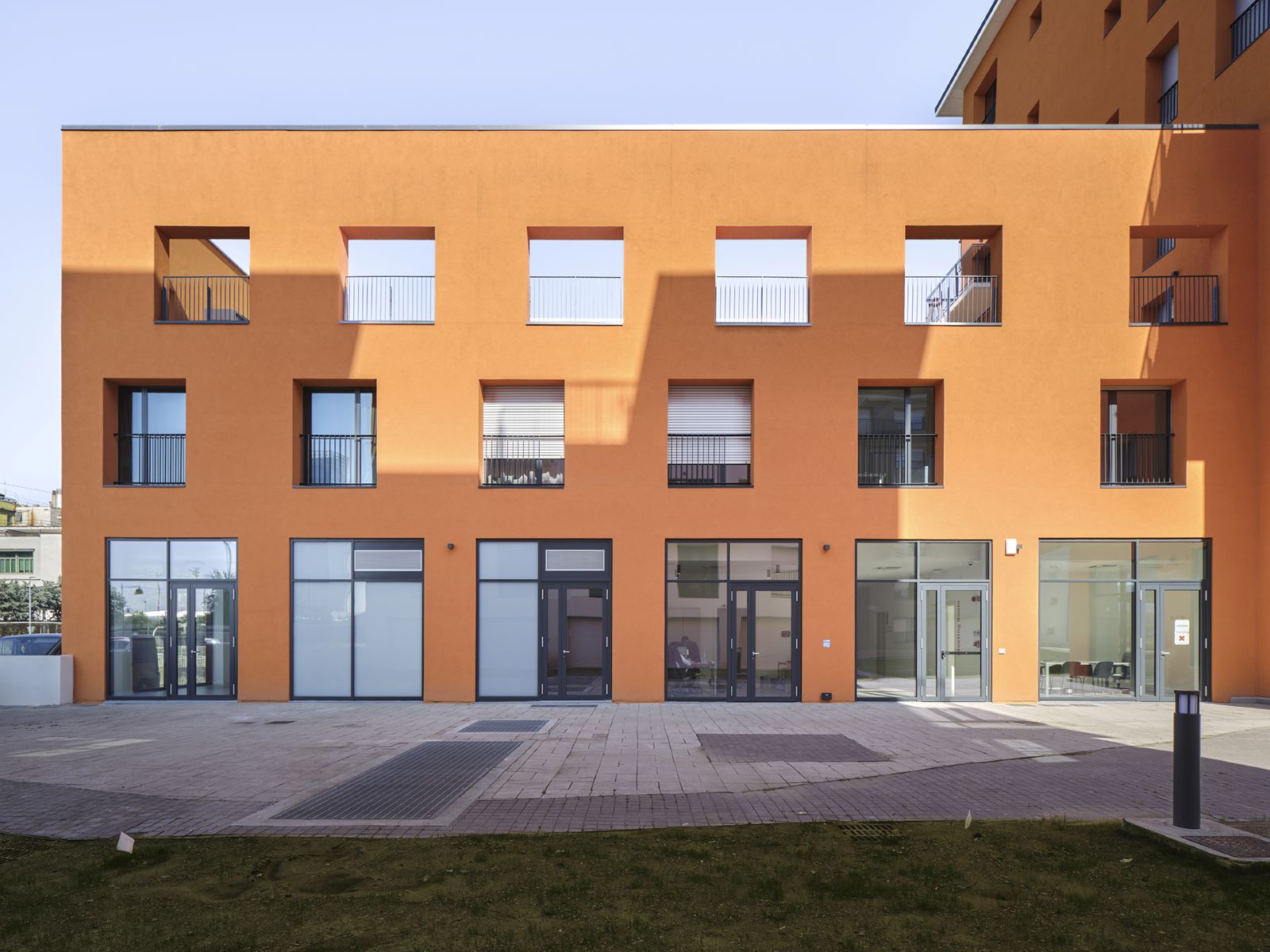
The urban and social revitalization of the buildings in the former Village provides future residents with modern and affordable housing, rich in personal services, in a university city like Turin. The project is also a candidate to be a catalyst for the major transformation of an urban area that is expected to see the emergence of the Health, Research, and Innovation Park and the restoration of the arches of the former market in the coming years.


